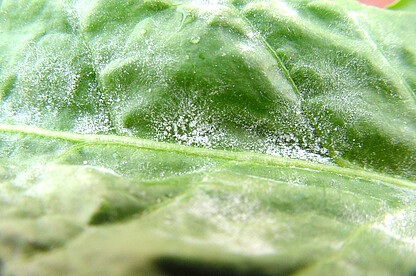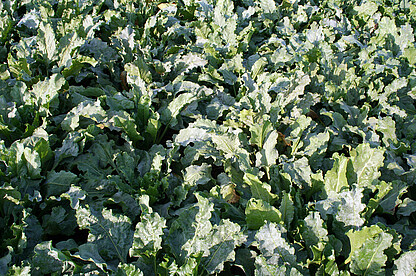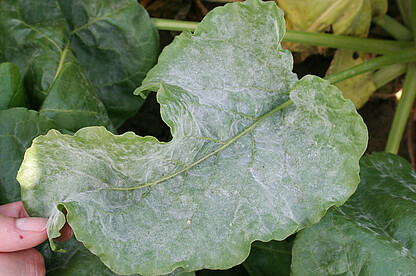Powdery mildew
Powdery mildew is a fungal disease. The pathogen is the fungus Erysiphe betae. The fungus is observed in all sugar beet growing regions around the world. It is of particular importance in areas with dry and warm climates.





Powdery mildew, Erysiphe betae, forms a mycelium only on the leaf surface with gray-white conidia. Hyphae penetrate the epidermal cells and attach the mycelium on the leaf with the help of haustoria. The fungus supplies itself with nutrients from the haustoria. (Diagram) The mycelium is initially perceived as a spider web- like structure on the leaf surface resulting in a powder-like covering which is looking like flour. The white gray covering can be washed off. The conidia of the fungus are spread by wind.
In contrast to Cercospora, powdery mildew does not lead to the death of cells and tissue. Loss of yield is caused by its parasitic way of life.
And then again in comparison to Cercospora, the occurrence and spread of powdery mildew is favoured by warm, but dry weather. Powdery mildew infestation can cause yield losses that are as high as those with Cercospora leaf spots. An early infestation in July must be treated according to the threshold of infection. The plants should be checked by the end of August.

